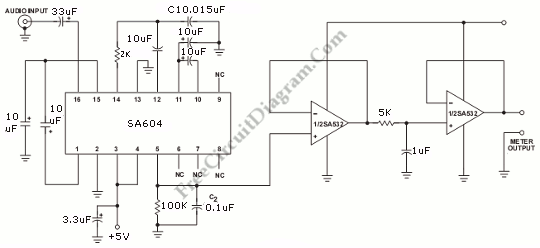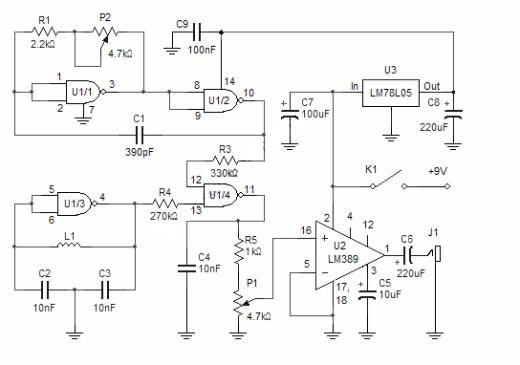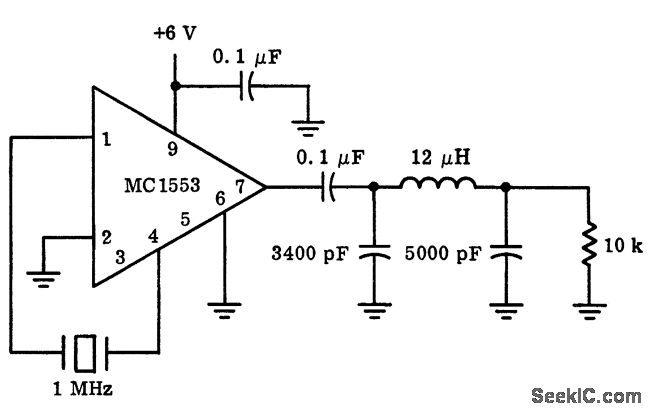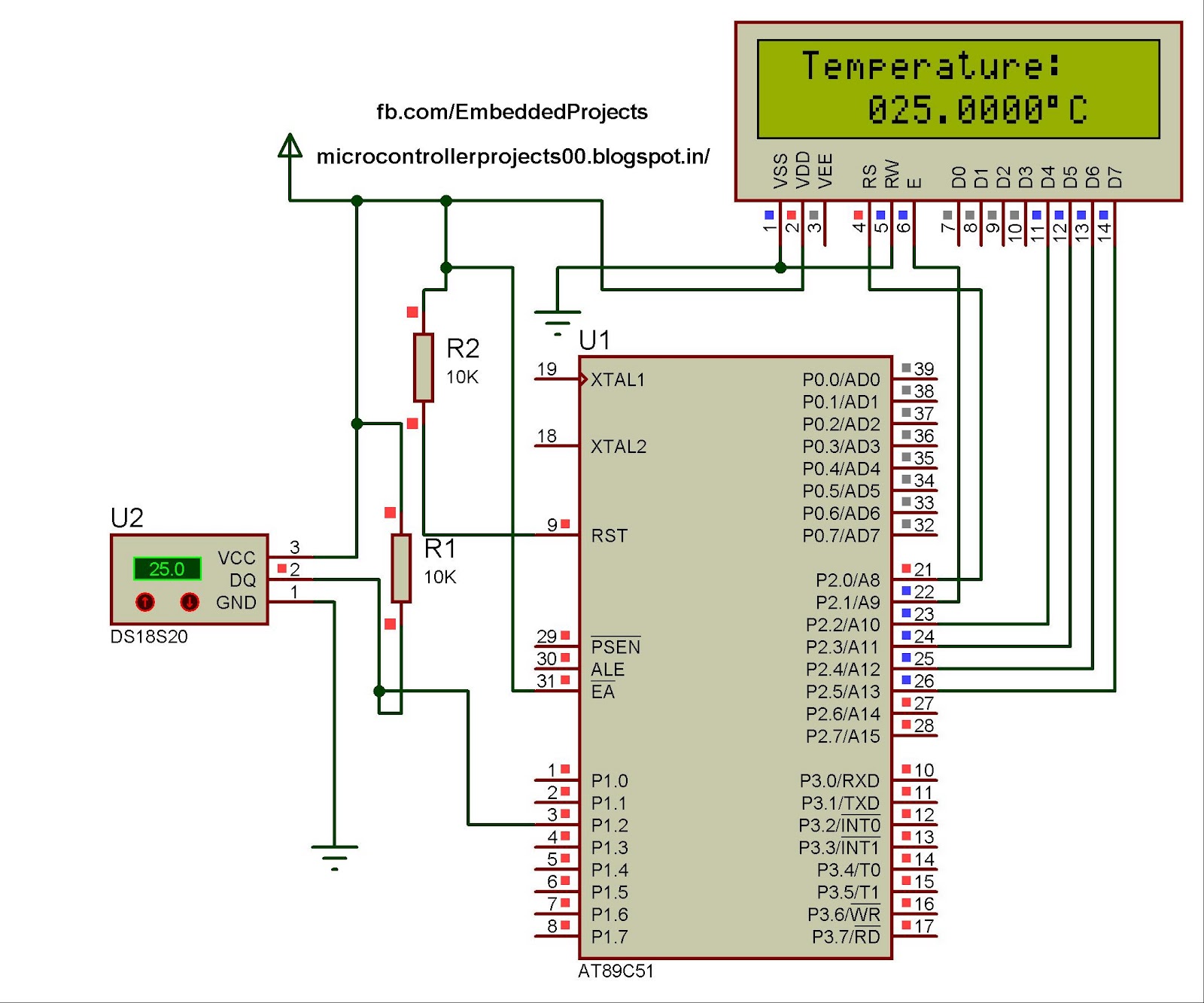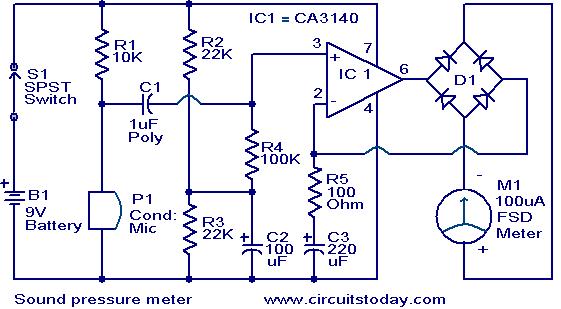
Capacitance Meter Using 555 Oscillator
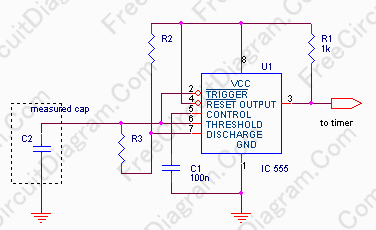
The frequency formula of a 555 oscillator is well-known. For given resistors and capacitors, the frequency can be calculated using a specific formula derived from mathematical principles.
The 555 timer IC is widely used in various applications, including oscillators, timers, and pulse generation. In the astable mode, the frequency (f) of the output waveform can be calculated using the formula:
\[
f = \frac{1.44}{(R_1 + 2R_2)C}
\]
Where:
- \( R_1 \) is the resistance connected between the supply voltage and the discharge pin (pin 7).
- \( R_2 \) is the resistance connected between the discharge pin (pin 7) and the threshold pin (pin 6).
- \( C \) is the capacitance connected between the threshold pin (pin 6) and ground.
The duty cycle can also be calculated to determine the proportion of time the output is high versus low, which is given by:
\[
D = \frac{R_2}{R_1 + 2R_2}
\]
This formula indicates how the values of \( R_1 \), \( R_2 \), and \( C \) influence the frequency and duty cycle of the output signal. The 555 oscillator can be configured to produce a square wave output, which is useful in generating clock pulses for digital circuits, frequency modulation, and tone generation.
In practical applications, it is essential to select resistor and capacitor values that are within the operational limits of the 555 timer to ensure stable and reliable performance. The frequency can be adjusted by varying the resistor values or the capacitance, allowing for versatile applications in timing and waveform generation circuits.The frequency formula of 555 oscillator is popularly known. For a known resistors and capacitor, the frequency can be determined by a formula. From the math. 🔗 External reference
The 555 timer IC is widely used in various applications, including oscillators, timers, and pulse generation. In the astable mode, the frequency (f) of the output waveform can be calculated using the formula:
\[
f = \frac{1.44}{(R_1 + 2R_2)C}
\]
Where:
- \( R_1 \) is the resistance connected between the supply voltage and the discharge pin (pin 7).
- \( R_2 \) is the resistance connected between the discharge pin (pin 7) and the threshold pin (pin 6).
- \( C \) is the capacitance connected between the threshold pin (pin 6) and ground.
The duty cycle can also be calculated to determine the proportion of time the output is high versus low, which is given by:
\[
D = \frac{R_2}{R_1 + 2R_2}
\]
This formula indicates how the values of \( R_1 \), \( R_2 \), and \( C \) influence the frequency and duty cycle of the output signal. The 555 oscillator can be configured to produce a square wave output, which is useful in generating clock pulses for digital circuits, frequency modulation, and tone generation.
In practical applications, it is essential to select resistor and capacitor values that are within the operational limits of the 555 timer to ensure stable and reliable performance. The frequency can be adjusted by varying the resistor values or the capacitance, allowing for versatile applications in timing and waveform generation circuits.The frequency formula of 555 oscillator is popularly known. For a known resistors and capacitor, the frequency can be determined by a formula. From the math. 🔗 External reference
